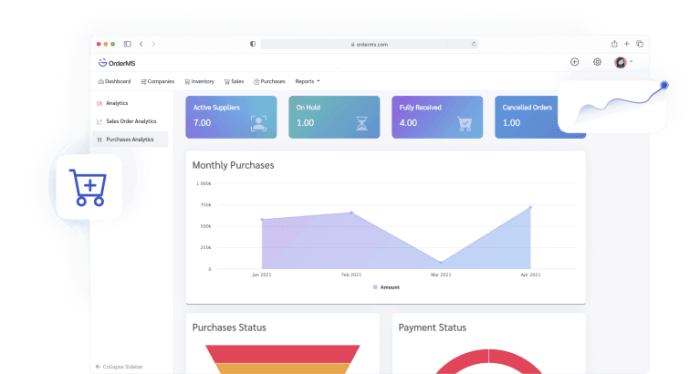Change order management software is a crucial tool for businesses across various industries, from construction and manufacturing to healthcare and IT. This detailed guide explores the features, benefits, and considerations when selecting and implementing such software. We’ll cover everything from understanding the fundamental concepts of change orders to identifying the ideal software for your specific needs.
What is a Change Order?
A change order is a formal document that Artikels modifications to a previously agreed-upon project scope, schedule, or budget. These changes can arise from various factors, including client requests, unforeseen circumstances, or evolving project requirements. Effective change order management is critical for maintaining project profitability, control, and timelines. Properly managing change orders ensures transparency and accountability throughout the project lifecycle.
The Importance of Change Order Management Software
Manual change order processes often lead to inefficiencies, errors, and delays. Change order management software streamlines the entire process, from initial request to final approval. This automation offers numerous advantages, including:

Source: pttrns.com
- Improved Accuracy: Software reduces manual data entry, minimizing errors and ensuring data integrity.
- Enhanced Communication: Centralized platforms facilitate communication among stakeholders, keeping everyone informed and on the same page.
- Increased Efficiency: Automating tasks such as tracking, approval workflows, and reporting saves time and resources.
- Reduced Costs: By minimizing delays and errors, software helps control project costs and prevent overruns.
- Better Project Control: Real-time visibility into change orders enables better project control and forecasting.
Key Features of Change Order Management Software
High-quality change order management software should encompass several crucial features:
- Request Submission and Tracking: Allowing users to easily submit change requests and track their progress through the approval process.
- Document Management: Storing and organizing all relevant documents related to change orders, such as specifications, drawings, and approvals.
- Approval Workflow Management: Defining clear approval paths and automatically routing requests to the appropriate stakeholders.
- Cost Estimation and Budgeting: Facilitating accurate cost estimations and updates to project budgets.
- Schedule Management: Updating project timelines based on change orders and ensuring project adherence to deadlines.
- Reporting and Analytics: Generating comprehensive reports on change orders, including costs, timelines, and other key metrics.
- Integration with Other Systems: Seamless integration with project management software, accounting systems, and other relevant platforms.
Selecting the Right Software: Change Order Management Software
Choosing the right change order management software requires careful consideration of your specific needs. Factors to consider include:
- Project Complexity: The scale and nature of your projects will influence the software’s required functionality.
- Budget: Software solutions vary significantly in price, so budget constraints need to be addressed.
- User Interface: A user-friendly interface is crucial for efficient adoption and use by all stakeholders.
- Scalability: The software should be able to grow with your business needs.
- Vendor Support: Reliable vendor support is essential for addressing issues and providing assistance when needed.
Examples of Change Order Management Software
Several software solutions are available in the market. Researching reputable vendors and their offerings is crucial for finding the best fit for your organization. (Include a few examples, e.g., Procore, PlanGrid, etc. with brief descriptions). Refer to reputable review sites for user testimonials and evaluations.
Frequently Asked Questions (FAQ)
- Q: How much does change order management software cost?
A: Pricing varies significantly depending on the features, functionalities, and vendor. Contact vendors directly for pricing information.
- Q: What are the benefits of integrating change order management software with project management software?
A: Integration ensures data consistency and automates the flow of information between systems, improving overall efficiency.
- Q: How can I choose the right software for my business?
A: Carefully assess your specific project needs, budget, and user requirements. Consider conducting trials or demos of potential software solutions.
Conclusion
Effective change order management is crucial for project success. Change order management software provides a robust solution to streamline the process, improve accuracy, and enhance communication among stakeholders. By carefully considering your specific needs and conducting thorough research, you can select the optimal software to support your project objectives.
Call to Action
Ready to optimize your project management? Explore the range of change order management software solutions available and contact us today for a personalized consultation.
Sources: (List reputable sources here, e.g., industry publications, vendor websites, research reports)
FAQ Overview
What are the common types of changes tracked by this software?
Common changes include scope modifications, schedule adjustments, and cost variations. The software can be tailored to track specific types of changes relevant to the project.
How does the software ensure data accuracy and security?
The software utilizes robust data validation and security protocols to ensure accuracy and confidentiality of change order information. Access control mechanisms limit data access to authorized personnel.

Source: googleusercontent.com
What are the benefits of using change order management software over manual processes?
Software offers significant benefits such as reduced errors, improved communication, automated workflows, and real-time tracking of changes. This leads to faster project completion and enhanced profitability.